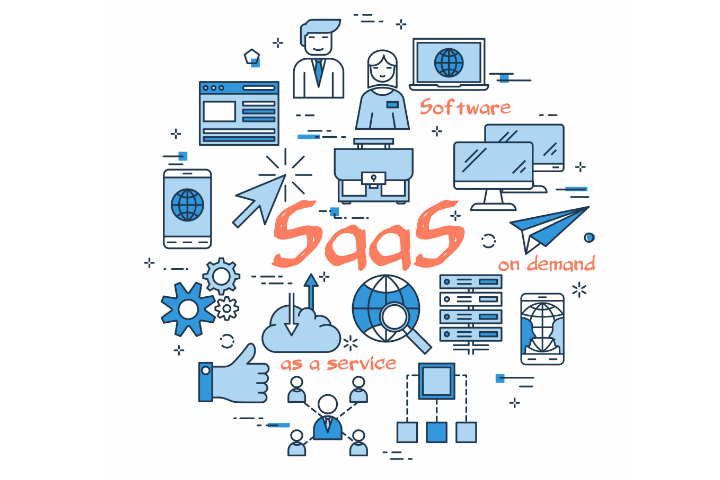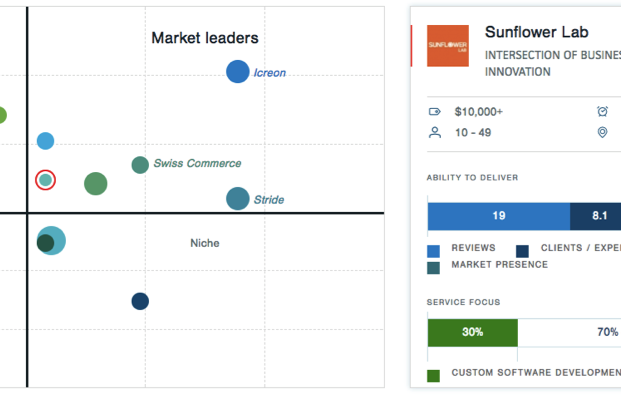So, you’ve got this brilliant idea for a SaaS product development, and you’re ready to venture into the world of software entrepreneurship. But where do you start? How do you turn that light bulb moment into a fully-fledged SaaS business that’s both successful and sustainable?
Meet Groove Dance Competition: A Story of Growth and Success
Groove Dance Competition has transformed into the second-largest organization in the dance competition and awards space since its origin in 2011. Hosting numerous impressive events, Groove’s journey is a testament to its remarkable growth and adaptability.
Back in 2011, Groove faced the challenging task of managing all their registration and scheduling activities through Excel spreadsheets. Despite encountering numerous challenges and setbacks due to the lack of organized data, the company persevered and succeeded in its endeavor.
Fast forward to today, Groove has revolutionized its operations. With a fully automated event scheduling and enrollment system, along with a Windows-based application for contestant scoring, Groove has become a powerhouse in the dance convention and competition scene, showcasing 9 regional competitions, and hosting 54 events, with 20,000+ dancers across their stage.
Groove’s success story is unique on its own, but there are many companies, like Groove, that have solved their operational challenges by developing custom software solutions. This proactive approach to problem-solving is the bedrock of a successful Software-as-a-Service (SaaS) business, a model that has seen exponential growth in recent years.
The Appeal of SaaS: Why It's the Way to Go
- According to Gartner Research, Software-as-a-Service (SaaS) remains the largest segment of the cloud market, with revenue projected to grow 17.9% to reach $197 billion in 2023. This growth underscores the appeal of SaaS, offering unmatched availability, scalability, speed, and security.
- Not only that, the global Software as a Service (SaaS) market size is projected to grow from $273.55 billion in 2023 to $908.21 billion by 2030, at a CAGR of 18.7% during the forecast. North America’s SaaS market size was evaluated at USD 104.64 Billion in 2022 (Fortune Business Insight).
- Also, as per the data bank Statista, the software as a service (SaaS) market is estimated to reach 232 billion U.S. dollars by 2024.
Don’t Let Limited Resources Hold You Back, Serve Multiple Customers at the Same Time by Adopting a Multi-Tenant Model!
A SaaS application is similar to a multi-tenant apartment complex. Just as a landlord manages security, electricity, water, and other facilities for all tenants, a SaaS platform centralizes administration for all users.
Imagine upgrading security at the main entrance of an apartment building; this upgrade benefits all tenants. Similarly, a SaaS application is built on a common code base and serves multiple tenants (clients/businesses) with individual instances, ensuring that each tenant’s confidential data is secure and isolated.
The beauty of SaaS development services lies in their multi-tenancy, where shared code, elements of the technology stack, and databases benefit everyone. However, what sets SaaS product development apart is its ability to offer each customer the same base product while allowing them to personalize their experience. This customization option empowers customers to tailor the product to their specific needs, making it truly their own.
Allowing for customizations in SaaS product development offering is key to providing a personalized experience for each customer. While maintaining a common core product, enabling reasonable customizations can greatly enhance customer satisfaction and retention.
Future-Proof Your Business Operations with SaaS
Seize new opportunities with our innovative SaaS product development solutions.
Striking the Right Balance with 80/20 Rule: Simplifying SaaS Customizations for Success
Building SaaS applications isn’t just about technology; it’s about understanding and meeting the needs of your users. It’s a shift from the world of custom software, where you cater to specific requests, to a more dynamic environment where many teams and customers have diverse needs.
Imagine you’re building a car. In the past, you could customize every detail to fit a single customer’s preferences. But in the SaaS product development world, it’s like building a car that many people will drive. You want it to be comfortable and useful for everyone, but you also can’t provide each driver their own unique vehicle.
This is where the 80/20 rule comes in. Instead of trying to fulfill every customization request, focus on the 20% of features that will provide 80% of the value to your users. It’s about finding the right balance between meeting customer needs and maintaining a simple, easy-to-use product. As Henry Ford famously said, “Any customer can have a car painted any color that he wants, so long as it is black.” While you don’t have to limit your SaaS product development to a single color, the idea is the same – simplicity is key.
When managing SaaS features, think about the impact each customization will have on the overall user experience. Will it enhance the product for the majority of users, or will it add unnecessary complexity?
By focusing on simplicity and practicality, you can ensure that your SaaS product remains user-friendly and valuable to your customers. It’s about finding the right balance between meeting customer demands and maintaining a product that is simple, intuitive, and easy to use.
Security and Hosting in SaaS Product Development: Essential Considerations
Security and hosting are critical aspects that should never be treated as afterthoughts in SaaS development. It is imperative to ensure that all SaaS applications are built with security as a native component within both the applications and the infrastructure.
Industry-Specific Regulations and Compliance
One often overlooked aspect is the need to comply with industry-specific regulations. For instance, the healthcare sector requires compliance with HIPAA, while government agencies may need to adhere to FedRAMP standards. Failure to comply with these regulations can result in the inability of regulated customers to use SaaS applications, even if they are on the cloud. It is crucial to consider these regulations during the architectural and developmental stages of your SaaS application.
Hosting and Data Security
Data hosting is another significant concern in terms of security. It is advisable to host SaaS applications natively in the cloud, as many cloud hosting providers offer built-in security measures within their environments.
When hosting in the cloud, ensure that all aspects of your application are hosted in the cloud and that your instances are set by specific regions. Consider establishing a client cluster consisting of several virtual instances to ensure the segregation of customer data.
At Sunflower Lab, we implement a setup scenario on our AWS cluster where four large customers share Instance A, while six smaller customers are assigned to Instance B. This approach ensures that everyone accesses the same URL but the client cluster and instances are parsed out.
Clustered Hosting for Reliability
Clustered hosting is a highly recommended practice as it distributes services across multiple hardware machines, eliminating single points of failure and increasing the overall reliability of your SaaS website. This approach surpasses what single server hosting can provide, ensuring enhanced reliability and data security.
By considering these security and hosting factors early in the development process, you can ensure that your SaaS application meets the highest standards of security and compliance, enhancing its overall success and customer trust.
What's the Future?
Transitioning a workflow, project, or existing company into a SaaS business can be both rewarding and challenging. While uncertainties and mistakes are inevitable, the satisfaction of creating something impactful is unparalleled.
In a market where many factors are beyond your control, focusing on proper planning and alignment can significantly increase your chances of building a successful SaaS business. Implementing the recommendations outlined in this guide can help you navigate the complexities of SaaS product development and position your SaaS product towards growth.
Feeling unsure about how to proceed? Sunflower Lab is here to support you! With a proven track record and our expertise in process improvements, workflow optimizations, and automation solutions, we can help bring your ideas to life. Contact us today to learn more!
You might also like
Stay ahead in tech with Sunflower Lab’s curated blogs, sorted by technology type. From AI to Digital Products, explore cutting-edge developments in our insightful, categorized collection. Dive in and stay informed about the ever-evolving digital landscape with Sunflower Lab.






